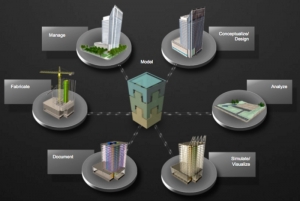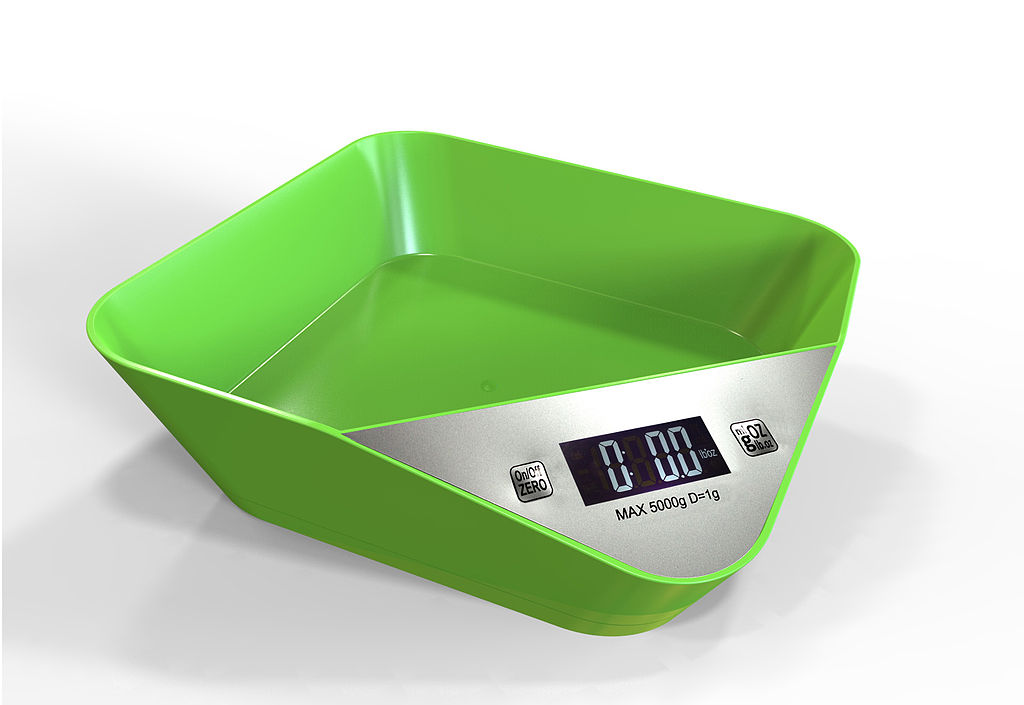You are here
Building Information Modeling (BIM) is an approach to design that uses intelligent 3D computer models to create, modify, share, and coordinate information throughout the design process. Many AEC firms are using BIM to drive a more efficient design process.
In addition to driving a more efficient overall design process, BIM is powerful for sustainable design because it can help you iteratively test, analyze, and improve your design. This is called Building Performance Analysis (BPA). When used well, using BIM for building performance analysis can help you design sustainably.
| Building Information Models can be used to design, optimize, and visualize a building. This is a visual rendering, but this model might also be used for construction and performance analysis. |
Models are approximations of reality
All models are approximations of reality. Understanding how to make your building model approximate physical reality can help you create a higher performing building.
Statistician George E.P. Box is quoted as saying: “All models are wrong, but some are useful.” The same goes for building information models – and the key is to make your models as useful as possible. For example, a model is useful if it is able to predict future observations, help control future events, or explain past observations.
The "i" in BIM drives analysis
At the core of BIM is the information that’s stored in the model. All of this data is stored and referenced in a back-end database that's an integral part of the model.
 |
BIM uses a central model that can be extended for multiple purposes, including performance analysis. |
This information includes the geometry of the project (shapes, layout), the physical properties of the materials (wall constructions, thermal properties, visual properties), the type of the spaces in the building, and schedules of operations of each part of the building. Other inputs that can be part of the model include the location of the building and weather files, which contain detailed information on such environmental characteristics as temperature, the sun’s path and wind patterns.
Using this information, analysis engines can run simulations on things like HVAC sizing, energy use, water use, shading, and lighting levels. You can then make better design decisions by analyzing and documenting the expected performance of your design.
The infographic below explains how BIM and BPA are related, and what types of analyses can be considered building performance analysis. Whole Building Energy Analysis takes into account the interdependencies of the building as a whole system, so it is a particularly useful way to "keep score" as you work to reduce building energy use. Other performance studies like daylighting and solar radiation can help you improve aspects of the design. These studies are most effective when done in conjunction with energy analysis.
By using mathematical models of real-world phenomena, BPA and BIM can help designers predict the performance and cost of a building project during the design process.
The linkage of BIM to BPA tools can enable analysis to happen more quickly, more often and more smoothly during the design process. Without the direct link to a building information model, energy analysis can involve time consuming manual takeoffs of geometry from 2D plans.
One of the exciting promises of BIM is that it provides users with the ability to analyze building performance earlier in the design process, when design changes can be easier, less expensive, and more impactful.
Parametrics make modeling easier
Creating design geometry is often done parametrically in BIM, which means that the related elements in the design are defined by linked parameters defining the interaction between the two (for instance, you can build constraints between elements, lock dimensions, and align elements).
Also, relationships exist between the building elements: a window knows that it is a hole in the parent wall, and a roof knows that it is attached to the top of the walls. This is in contrast to simpler 2D CAD models in which two parallel lines might know that they were two parallel lines, but do not know that they are a wall and hence can’t "know" their connections, mass, visible reflectance, or thermal characteristics.
With BIM you can build one model and view that model in many different ways (floor plans, elevations, schedules), because the model parts know where they are located in relation to one another and how they look in section. A change in the definition of an object will propagate that change throughout every view of that object in the model.
Model Types and the Design Team
Different models are used by different people at different times. Architects tend to be more visual (preferring to draw and sculpt) and their models look like the building will look. Engineers are more analytical (preferring to calculate and analyze) and their models might look like a simplified building – or not a building at all (but just a table of numbers). All of these different kinds of models can be used for integrated sustainable building design.
Examples of different “flavors” of BIM are:
- An architect might author a model that describes the building geometry model.
- An architect or engineer might create an energy model from the building geometry. (EAM = Energy Analytical Model)
- An MEP engineer might create a discipline design model that fully describes piping and HVAC ductwork, for example.
- The entire team might collate their models into an aggregated design model to coordinate different elements of the projects coming together in 3D.
- Manufacturers and contractors can use a fabrication model to make customized assemblies for a building.
- Facilities or energy engineers can use an existing conditions model to coordinate maintenance and retrofits.
As you iterate and move through the phases of design, your building information models will evolve. As your design progresses and you acquire more information, you’ll work at different scales and level of detail. Along the way, you should always be asking yourself what kinds of models will be most insightful and what level of detail is the most appropriate.
Dive Deeper
BPA Software Workflows
Being deliberate about your analysis process using BIM can go a long way towards both saving you time and improving the usefulness and validity of your results.Links and References
- Connect directly with Autodesk's Building Performance Analysis team, who are working to bring you the next generation of Autodesk tools!



